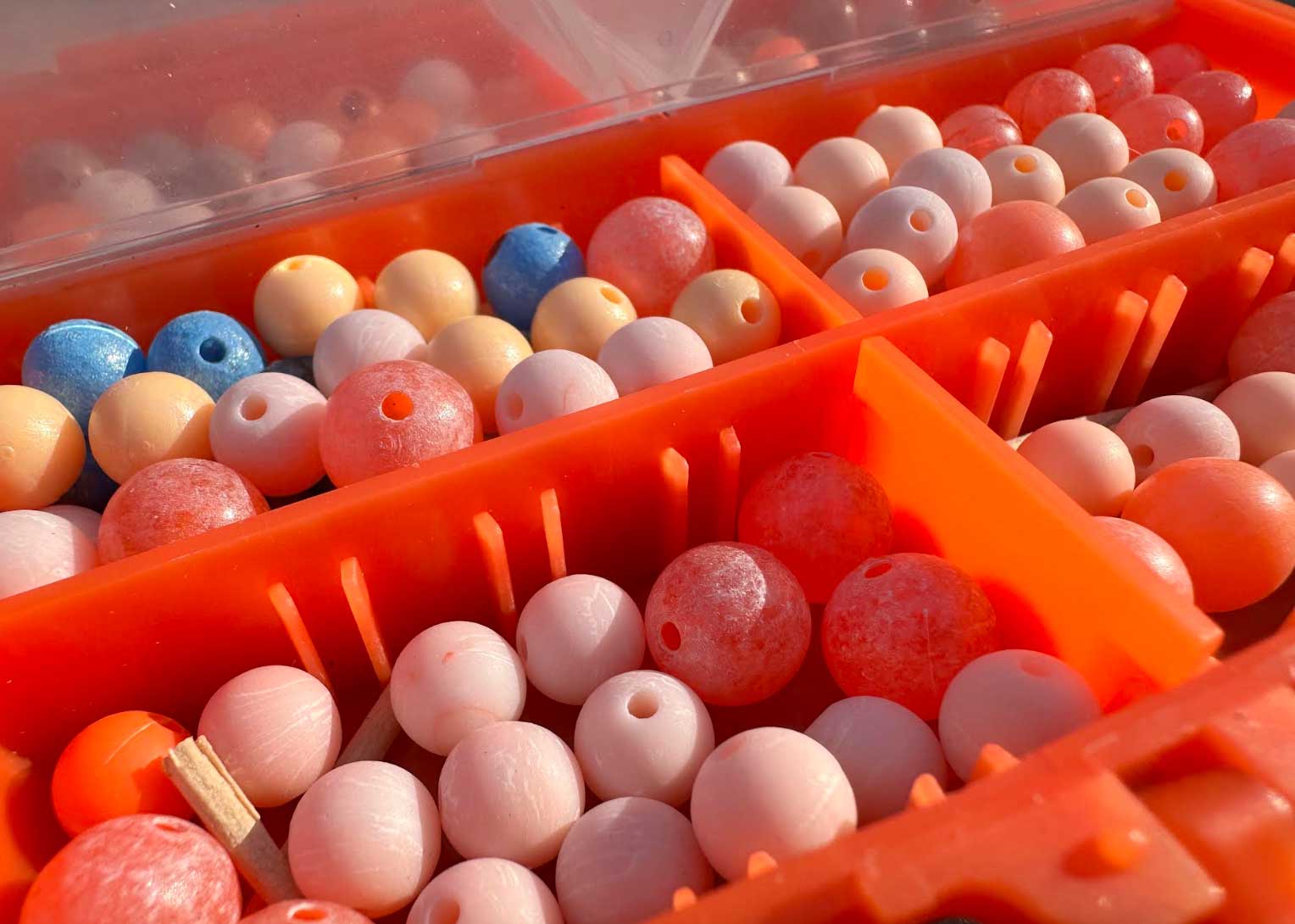Salmon eggs are trout candy. Many anglers don’t want to admit that, largely because they like to think of trout as exceptionally smart, discerning fish. At times they can be, but they also have instincts. Salmon eggs—and other fish eggs, too—provide a lot of protein. Even trout that do not share water with salmon naturally recognize these bright, round morsels as a food source.
Trout also have no issue eating the eggs of their own kind. Though salmon eggs can produce year-round, they are especially effective in fall and winter as other menu items (like insects) start to get scarce. I’d say that attacking a trout stream in fall and winter without eggs or egg imitators is a bad move.
So, as temps begin to drop, here are three options that will make scoring late-season trout a little easier.
My buddy, Bill Brinkman, owned one of the most iconic tackle shops in the Philadelphia area for 30 years. He vividly remembers when PowerBait rocketed in popularity among trout anglers, recalling that in no time, the number of jarred salmon eggs he ordered dropped off significantly. It’s true that natural salmon eggs are not as popular among stream trout anglers as they were in the 1980s, but they’re still a very potent bait.
Where natural eggs haven’t taken a back seat is in steelhead rivers, predominantly because these fish share water with spawning salmon, so natural salmon eggs are a huge part of their diet. In most cases, natural eggs are cured to toughen them up, then a small cluster is tied into a mess bag that helps them stay on the hook. In smaller trout streams, however, drifting a single egg is more common, but keeping them on the hook can be tricky.
Salmon eggs are soft and delicate. Put too much oomph into a cast and they’ll fly right off. To thwart this, make sure you’re using a proper egg hook. These tiny, short-shank hooks feature a single bard to help the egg stay in place. Run the point shallow through the side of the egg. Now, with the bend on the underside of the bait, rotate the hook and push the point upward straight into the center of the egg.
It doesn’t get much simpler than a salmon egg fly. In fact, even if you don’t tie your own patterns, creating a salmon egg at the vise is so easy that it’s almost silly to buy them pre-made. Flyfishermen like to call salmon egg flies “glo bugs” to make them sound fancier, but this simple ball of yarn on a small hook is anything but fancy.
Egg flies are available in a huge range of colors—including blue, which is popular among steelhead anglers. However, when in doubt, stick with the proven colors. Pink, orange, tan, and red will catch trout in any body of moving water anywhere. They are often presented like a nymph with a split shot or two crimped above them and a strike indicator on the surface to alert you to grabs. I know many winter fly anglers that always have a salmon egg pattern tied on a dropper loop above their primary nymph pattern. The two-fly combo is sometimes referred to as “bacon and eggs,” and even when the fish are tuned into a specific aquatic insect, the bright, round morsel drifting by is often too tempting to resist.
Egg beads are versatile. They can be fished on a fly rod or with spinning tackle under a float or bobber. They can be more effective than natural eggs and egg flies at times, giving their use a reputation as a form of “dirty pool” within some trout fishing circles. However, the irony is that from a conservation standpoint, they do less damage to fish and aid in faster, healthier releases. Here’s why.
You start by simply threading a bead onto your line or leader. You then tie or peg it in place. Next, you tie a small hook on the tag end a few inches below the bead. When a fish grabs the drifting bead and you set, the hook will slide up and pin the fish either just inside the lip or just on the outside of the mouth. I’ve been fishing beads for years and have never had to remove a bead hook from the back of a trout’s throat. Once the fish comes to hand, I can quickly access the hook with my hemostats, pop it free, and off the trout swims.
Egg beads are available in near endless sizes, colors, and patterns, but here, too, if you’re not sure what to use, stick with pink, tan, and orange. Soft-plastic beads have also become very popular, partially because they feel more like a natural egg when the fish clamps down.
Read the full article here




